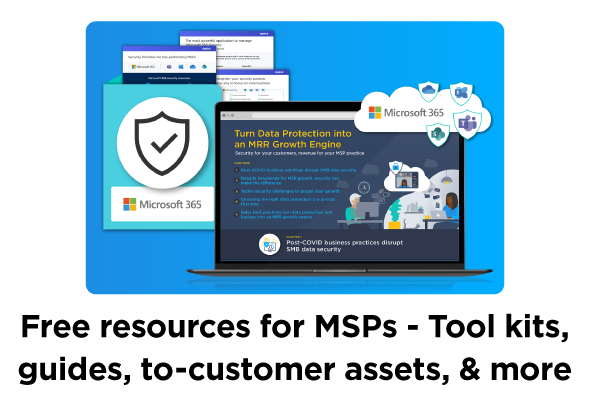For the past 27 years, IT management and consulting company CompuVision Systems has been helping organizations of all sizes get the most from their IT investments. With headquarters in Edmonton, Alberta, CompuVision has clients across North America and around the globe.
As an MSP, CompuVision serves a diverse client base. “We have clients in many different industries,” says Automation Engineer and Developer Saul Ansbacher. “Even so, there are many similarities in their needs. They all need security, support, and service. They all need to be able to count on us to keep their systems up and running.”
It was CompuVision’s desire to automate processes in order to make it easier for their engineers to provide excellent customer service that brought them to SkyKick Cloud Manager.
CompuVision’s goal: automate cloud administration
“My job is to develop internal tools for use by our various teams,” Saul shares, “with a focus towards trying to automate many of the mundane, repetitive, and/or error-prone tasks. We wanted to be able to allow other team members to perform actions easily and securely across our customers’ cloud services—but we didn’t want each engineer to have to individually log in to each customer’s applications. And we definitely did not want to give away our high-level Partner Center access passwords, which are tightly controlled!”
CompuVision was already using SkyKick Cloud Backup, so they decided to take a look at Cloud Manager. Compliance Analyst Stephan Soucy was part of the group that reviewed Cloud Manager’s capabilities.
“I was really impressed,” Stephan recalls, “with being able to run commands against the multitude of different Microsoft 365 services without having to constantly re-login to PowerShell to access all the different modules that are there. Then, as I delved further into it, I found even more to like. For example, the Command Center is easy to use, but also flexible and customizable. Overall it’s just a lot faster than the methods we were using before.”
Using Cloud Manager to improve compliance audits
CompuVision’s compliance team is responsible for performing audits and assessments across their customer base. These audits provide a close look at various aspects of each customer’s environment and configurations in order to catch overlooked issues, identify gaps, and more.
“In the past,” Stephan observes, “gathering and correlating Microsoft 365 user data with on-premises user data took a long time and could be error-prone. We either used Microsoft’s built-in reports from the admin center to gather the Microsoft 365 data or we used a handful of custom PowerShell scripts to grab the information. But we had no automated method of doing this, so we would have to go into the individual admin centers for Exchange, Azure, Active Directory, etc. Needless to say, our audits were very time-consuming.”
Cloud Manager solved this problem. With Cloud Manager, CompuVision built a few commands dedicated to gathering state and configuration information from the various aspects of any given client’s Microsoft 365 tenant. These scripts can be run in the background. Once complete, the team takes the information gathered, combines it with information from other sources and prepares executive summaries.
“In this way,” Stephan points out, “Cloud Manager becomes the first step in a pipeline for delivering consistent audits in a timely manner.”
For the next step of their Cloud Manager rollout, Stephan plans to use the Cloud Manager Scheduler to run the audit data-gathering scripts and deliver the results to a central location. This way when they’re ready to do an audit they won’t have to wait for the scripts to finish running on demand.
Using Collections to simplify operations
One of the features that CompuVision is making use of is Cloud Manager Collections. A Collection is a way to organize and document a group of commands, including providing instructions to engineers for how to use them.
“I’ve already gathered the various commands used for one of our audits into a Collection,” Stephan states, “just to keep them easy to find. As we develop commands for other audits, we’ll put them in their own Collections as well.”
Stephan also sees Collections as being useful for speeding the learning curve when new compliance analysts join the team. Advanced users can share Collections of automation with a new team member for any given task or checklist. This way the new person can easily access all of the information and commands they need to quickly and accurately resolve that issue.
Another way that CompuVision is considering using Collections is to simplify operations in the service desk. One of the company’s senior techs had a series of commands he used to check if customers’ systems are in compliance with various security policies. He wanted to make it possible for the tier one and two technicians to run these commands across all clients. Cloud Manager makes this process easy. He can simply put the commands and instructions in a Collection and then give the Collection to the tier one and two techs.
“Once the senior techs have created and vetted commands,” Saul explains, “they can group these scripts into Collections so that the lower tier technicians can run them across clients, knowing that a senior tech has already curated this list of commands and determined that they are safe to use.”
Strengthening security across the board
Security is one of CompuVision’s major priorities, and one of the ways they monitor security is through what they call a Security Basics Audit, which looks at many details of the customer’s overall security posture. What is their multi-factor authentication configuration? How about their phishing policy, automatic email forwarding policy, and much more? CompuVision is using a Collection of commands in Cloud Manager to gather all of the necessary information, output this data to a .csv file and then automatically create an executive summary that the team can use in their actual audit.
“This really speeds up information gathering!” Stephan declares. “Now we are able to finish audits much faster, using a process that is absolutely consistent every time. Plus, instead of sitting there trying to remember how to do the pivot tables that you need in Excel to summarize the information, Cloud Manager does that work for us.”
These audits, of course, help the team uncover issues that may have been overlooked. “These issues,” Stephan notes, “can range from ‘none of your admins in Microsoft 365 have multi-factor authentication enabled’ to ‘your network gear is beginning to fail and should be replaced.’ Of course, when we find something simple, we quickly fix it. This makes the customer happier, more secure, and more likely to renew their contract.”
Conclusion
“When I think of Cloud Manager,” Saul acknowledges, “I see it as being like an RMM [remote monitoring and management] application for the cloud. There are products out there that let you manage all of your individual servers and workstations through a single console. Cloud Manager lets you manage multiple cloud services, and all of the individual users and mailboxes that are inside of these services, from a single console. It gives us a way to manage all of those cloud aspects that we could never install a remote agent on.”
“Plus,” Saul adds, “once you’ve got something that’s repeatable, that works for one or two customers, it’s quite easy to select it and have it run across all customers. So you can invest a little bit of time upfront and then really get a big return later as you’re able to push those settings and changes out across the board. Cloud Manager can really help you speed up your processes.”


